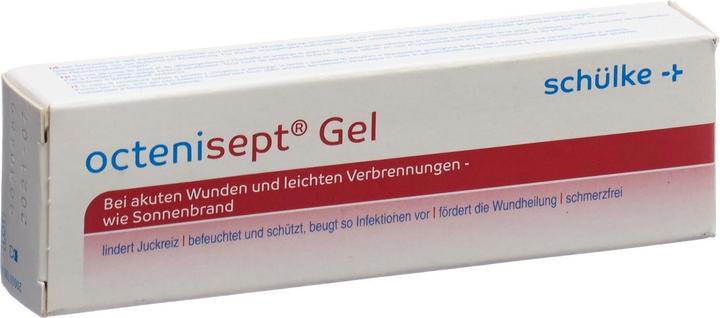

From disinfectant to duct tape: what actually helps against molluscum bumps
Molluscum lesions mainly affect children. What are sometimes referred to as water warts are contageous skin lesions that spread rapidly. In addition to lots of patience, ice, acid and even duct tape can help cure them.
Pox has a dangerous ring to it, and not just since monkey pox came on the scene. Its smaller and less harmful sibling is caused by the molluscum contagiosum virus. The warts usually go by the more palatable name «molluscum» and are very common, especially in children.
The small, 2–5mm bumps usually pop up in groups, are a viral disease and spread particularly fast on pre-damaged skin. They occasionally itch and are sometimes scraped open by scratching or friction with clothing. As soon as a molluscum bump breaks open, its contageous yellowy-white, pulpy contents, which sit just under the surface of the visible wart, spill out. This creates a new cluster of warts.
Dry or cracked skin increases the risk of contamination
After an infection, it generally takes a few weeks before molluscum bumps become visible. Usually, around 20 appear. But sometimes there can be up to several hundred. Kindergarten kids and young school children are most affected.
As with other viral diseases, it can be tricky to protect yourself from it. The contents of the warts are highly contagious. The molluscum virus lurks in swimming pools and on towels. Children can catch it by sharing clothes or toys, but also by frequenting gymnasiums. An intact skin barrier provides good protection. This means avoiding dry or cracked skin.
Treatment
As a rule, the molluscum bumps clear up sponteously after a few months. Some people, however, are affected for years (Pediatric molluscum contagiosum: reflections on the last challenging poxvirus infection, Part 1 - PubMed (nih.gov)). A weakened immune system poses a risk factor. To make them disappear faster, the mollusca can also be treated with ice (so-called cryotherapy), acid or potassium hydroxide (potassium hydroxide 5%). Patches containing salicylate, often used on other types of warts, can also be applied. Another option is to have them removed with a surgical tool called a sharp spoon.
Summary of treatments
| Therapy | Application | Pros | Cons | Source | Nachteil |
|---|---|---|---|---|---|
| Cryotherapy (extreme cold) | A swab soaked in liquid nitrogen is held against the molluscum wart for 6-10 s | Quick effect | Potentially painful, possibly scarring or change in skin pigment | https://pubmed.ncbi.nlm.nih.gov/17156002 | |
| Acid treatment or treatment with potassium hydroxide | Recommendations vary from dabbing on the solution twice daily to applications once a week | Easy to apply | Potential injuries to the surrounding skin, burning sensation | https://pubmed.ncbi.nlm.nih.gov/19171985 | |
| Salicylate plasters | Apply plaster and remove warts around twice a week; alternatively, apply salicylic acid and then cover with plaster | Easy to apply | Prolonged therapy duration may be required | https://pubmed.ncbi.nlm.nih.gov/19171985 | |
| Curettage (abrasion) | Removal of the molluscum warts with a sharp spoon | Rapid removal of the virus source | Requires a medical specialist, potentially painful, small wound afterwards | https://pubmed.ncbi.nlm.nih.gov/27601304 |
Cantharidin, a corneal dissolving substance found in several beetle species as well as the Spanish fly, was slightly more effective than placebo therapy in the «CAMP1» and «CAMP2» trials. However, this drug is currently (as of December 2022) only available online and internationally, but not in Swiss pharmacies. If you managed to snag a bottle of it, you need to apply the solution to the wart and then cover it with a plaster. After treatment, a bubble forms within 1–2 days. This lifts the molluscum wart, which helps it fall off. This method makes most lesions disappear within a week.
As molluscum warts react similarly to common warts caused by papillomaviruses, duct tape can also be an option. Some studies suggest that taping makes warts disappear twice as fast as they would without therapy – after three months instead of six, for example. Cut duct tape to roughly the same size as the molluscum warts, making sure it just about covers them. Leave the tape in place for six days and then replace it with a new piece. In any case, covering the warts is a good way of preventing transmission. Regardless of the treatment method you choose, it’s important to disinfect the warts thoroughly as soon as their contents spill out. Otherwise you’re looking at more warts.
As a rule of thumb, the longer the bumps have had time to get comfy on the skin (especially when new clusters pop up), the longer it will take to get rid of them again. What’s more, the skin can become inflamed, especially when subjected to abrasion therapy. If the abrasion or scratching off of the molluscum warts leaves a wound, this can lead to scars. However, the harmless warts usually heal without scarring. The indentation that’s visible after a wart has healed closes up with time.
Header image: ShutterstockFamily and paediatrician, family counselling for big and small people. Loves emergency care and rescue transports and the interface with basic and clinical research. Journalism started with the school newspaper, later stations at the Deutsche Welle, the Deutsches Ärzteblatt, author of scientific publications.



